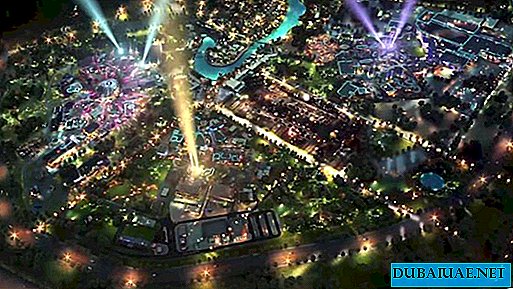Ethiopia has never been a priority on my proposed travel list, but I heard from friends that this is a beautiful country.
My curiosity was fueled by the yoga instructor whose classes I attended in Dubai in April. Emily taught yoga to people in various countries around the world and started the Yoga in Ethiopia project in her capital, Addis Ababa, only six months ago. Emily’s enthusiasm, passion and the scale of the projects became the powerful impulse that pushed me to search for adventures. I occasionally did yoga, so when I found out that classes were included in the travel program, without a second's hesitation, I agreed to fly to Africa.
Prelaunch Preparation
All preparations for the trip were much simpler than I imagined. Vaccinations and pills for malaria are always available in the UAE, although, according to my observations during the trip, they are not so needed. In any case, the vaccine in Dubai could be delivered in just an hour by paying USD 100. A visa to the country, having paid USD 20, is put in the passport upon arrival. FlyDubai flights to Addis Ababa last only 3.5 hours, and ticket prices start at less than UAE dirham 1000
All my impressions of the country were based on stories told by friends who had already been there - the longest Christian history in Africa, the picturesque landscapes and the heritage of Aboriginal people, as well as the widespread stereotypes about African countries - yellow fever, malaria, danger, poverty and undeveloped infrastructure. Since I did not expect much, some things simply surprised and pleased me.
Thanks ma'am!
The first thing that catches your eye is safety and a general friendly atmosphere. Ethiopia has a fairly low crime rate.
Despite widespread poverty, Ethiopian people are always very friendly towards their guests. For example, what would I not do in any developing country? Of course, leave your bag on the table in the local bar, going to dance! However, this could be done in Bahr Dar! And our guide once again confirmed that it is safe here.
The reverse side of Ethiopian friendliness, especially from children and teenagers in tourist places, is attempts to sell you souvenirs or provide any small service: from photographing and carrying bags to offers to be your constant guide for a certain amount of tip.
A friendly location and an open children's smile is not begging at all, but an offer of goods or services in a non-categorical form that disarms you. Children not only masterfully own the art of sales, but also add to it some fresh ideas and expressions that I have not heard in any other part of the world: "If you want, buy from me. No pressure." However, you need to know that these children take all your answers literally. You cannot leave them with a polite refusal like "I have no cash with me, not now, maybe, on my way back" and so on. They will wait for you "on the way back" and will escort you to the hotel to wait until you take the money in the room. Therefore, it’s best to directly and honestly say “thank you, no need” to them, of course, with a smile.
Then they understand that all attempts to sell you something are meaningless, and go away without offense. But the awkward apologies that they take seriously can make them feel cheated: "Sir, you promised you would buy when you get back ?!" I was personally very upset by European tourists with their polite apologies and Ethiopian children who naively believed in them ...
 Back to the future or ... three days in Addis Ababa
Back to the future or ... three days in Addis Ababa
Addis Ababa, being the capital of the country and the point where all the many routes in Ethiopia begin, deserves to spend a couple of days in it. The National Museum, despite its modest size, is pretty well equipped with modern audio and video equipment, and its collection includes the famous skeleton of Lucy - the oldest prototype of man known to science.
The oldest hotel in Addis Ababa - Taitu - brings you back at least one century ago and gives you the impression that you were in a movie about the times of the colonial conquests of Africa. And only tourists who suddenly come across here and there in your photographs return you to reality - "back to the future."
A short Italian occupation left its noticeable marks in Ethiopia's life - not only in architecture, but also in national cuisine - most of the places visited by tourists offer Italian dishes as an alternative to Ethiopian culinary traditions, about which a little more ...
Injara (injara) - a fermented Ethiopian bread that looks like a huge thick pancake - is an integral part of the daily menu. It covers a massive round tray serving snacks (such as Arabic mezze). Small pieces of meat (usually beef, as the most common and cheapest meat, followed by lamb and chicken) are cooked in a sauce with spices and served in the center of the tray. Mezze is brought in a separate bowl and laid out on a tray in front of the guests. Snacks range from spinach and cheese to vegetables with herbs.
Washing hands before eating is part of the ceremony. Waitresses in national dresses with silver jugs in their hands pour water into a special bowl, and excited tourists joyfully stretch out their hands for washing.
The traditional restaurant (they are always located in local huts) has a round shape and a conical roof, which is supported by a column installed in the center of the hall. There are no windows in such rooms, but the roof is luxuriously decorated, and the ceiling is painted with images of people and animals. The most pleasant impressions from visiting the traditional Ethiopian home I left fresh grass, laid on the floor. It gave an aroma of freshness and made it easy to remove any food debris that fell on the floor.
Dinner is always followed by dances that begin with the “warming up” of the audience by playing “masenqo” (Ethiopian balalaika) and jokes to visitors. If there was no guide with us, then translating some of them would be rather difficult, because jokes about tourists are part of the show). Ethiopian traditional dances usually consist of rhythmic movements of the shoulders and chest with incredible speed. Spectators greet good dancers and thank them by stuffing them with money under shirts or in the neckline of a dress. We were lucky to see a little Ethiopian boy dancing with a professional artist with such a feeling and skill that no one could believe that the child had nothing to do with the show. And when one of the spectators tried to give him money for a wonderful introduction, the boy threw them on the floor with obvious neglect ...
Honey tej is a local wine of medium strength. It is served in small glass vessels, more like medical flasks. Possessing a light and rather pleasant taste, in its effect it resembles sangria and is almost imperceptibly drunk while sitting at the table, but it feels good when you try to rise from the table and go.
Incredibly, most of Addis Ababa is a slum, and even the central square with souvenir shops and cafes is more reminiscent of the neighborhoods of the poor than the city center. The basis of the capital's taxi fleet is VAZ Lada cars of the early 1980s. Importing new cars into the country is taxed at 250%, so most vehicles here are over 20 years old. Traffic in the city is not so bad, but it seemed to me that the age of cars and the quality of gasoline make pedestrians feel like walking around a gas station. The logic of the authorities, aimed at maintaining a large number of old cars in the city and saving money inside the country (instead of paying it into the pockets of foreign automakers) due to heavily polluted air, remained incomprehensible to me. Another miracle is that these cars are still quite capable of driving ...
Goodbye capital!
An hour-long flight to Bahr Dar took us to a completely different world of the beautiful Lake Tana, mountains and the luxurious (according to Ethiopian standards) Abay Minch Lodge hotel. Bahr Dar itself, more than Addis Ababa, looks like an ordinary city with beautiful streets, trees, shops and street restaurants.
Even the people in him looked happier. After an hour boat trip, we moored to a beautiful peninsula with an old monastery. The inhabitants of the peninsula built their craft shops and shops on the way to the monastery, unobtrusively offering travelers paintings, necklaces, papyrus boats, baskets and traditional white cotton scarves.
There are several things in Ethiopia that European tourists should know about and be patient in advance. The first is the speed of service in restaurants (at some points of catering you will have to wait about 2 hours for your order).
The second is any attempt to make any changes to the dish indicated on the menu, it stumbles on the waiter’s response “this is impossible”. Traditional cuisine does not represent what one would like to eat every day, however, Western European dishes leave much to be desired, so true gourmets should slightly lower their level of claims. But when it comes to coffee - Ethiopia has no equal, and it is impossible to resist this drink.
I usually don't drink coffee often and prefer to dilute the drink with milk. But it was in Ethiopia that she drank 2-3 cups of “mocciato” a day and received real pleasure from them. The famous Blue Nile waterfalls in July - were thin brown streams.
We were told that waterfalls looked different ten years ago, just because of the constructed dam 85% of the water was diverted from them. But even this slight grief, could not spoil the overall impression of the magnificent picture of the surrounding landscape - green hills and a picturesque valley.
As I already mentioned, yoga classes were included in the program of our trip, so the choice of hotels was made in accordance with this part of the trip. The best place to practice yoga outdoors was the Abay Minch Lodge Hotel in Bahr Dar, namely its luxurious garden, planted with mango, avocado and vibrant colors. We took a traditional hut, designed for coffee ceremonies, and met the dawn with light breaths and exhalations, accompanied by bird singing, and continued to take basic asanas, stretching and strengthening our body and spirit, to be ready for further adventures.
Gondar and Lalibella
The remaining two cities included in our route - Gondar and Lalibella, were located only 3 and 5 hours away, respectively, so we went there by car.
The surrounding landscape was so picturesque that it was worth it to drive along a small stretch of dirt road at a speed of 40 km / h. The road looped up and down hilly terrain, here and there giving us views of corn fields smoothly turning into dense dark green forests that reminded me of my native Russian Far East. Surprisingly, most of the roads here are in good condition; all of them are equipped with storm drains on the sidelines. These roads were built by a large Chinese corporation for their own convenience and to promote trade with Ethiopia.
Gondar greets you with a shocking contrast between the magnificent castle and palace and the glaring poverty of the locals. Most likely, rainy weather also complements the depressing impression of this dirty gray city. The white smiles of the children and the gleam of their eyes seem to be the only thing that sparkles outside the castle walls of the castle and the palace.
However, it falls in Ethiopia several days a year, when almost the entire city turns white - from white cotton scarves and clothes that all residents wear in honor of one of the religious holidays. The program of our trip included a visit to one of them.
The road from one city to another gives us much more pleasant views - simple dwellings, well-cultivated fields and growing crops look very nice. Many questions arise in my head - why do some farmers build houses, cultivate the land and live a quiet and glorious life, while other people live in poverty in urban slums?
The nature of the country is very generous - with fertile soils, sun and rains, warm weather almost all year round. So what is stopping the government from providing the inhabitants of the country with great opportunities for cultivating land and maintaining a good standard of living? It is amazing how conservative these people are in their views, and what difficulties turn up for non-governmental organizations and the UN to at least somehow improve the lives of poor people where religion is the only lever of influence on the minds and the government is the only real force.
The city of Liabella is famous for its 11 churches carved directly into the rocks, making them look like underground temples, interconnected by underground tunnels. It is believed that they were built in 12-13 centuries in just 23 years. These data cause a lot of controversy in the world of science, but the numbers and facts were voiced by our guides, and most Ethiopians believe in them - all 11 churches were built with the help of God, since none of the people was given the chance to create such a thing in 23 years. Any attempts to bring our guide as an example of a source of inspiration for the historical and cultural heritage of Ethiopia stumbled upon religious dogmas. It’s sad.
On the other hand, which is sadder is the big question. To see hungry children who need food and knowledge, but want to change their lives and are constantly working to earn a living, study foreign languages, so that they can read the magazines forgotten by tourists and watch the National Geographic channel, trying to expand their knowledge about the world? Ethiopian children who earn money by polishing shoes on the streets know the names of all European capitals. Tell me, are there many children from Dubai aged 8-9 who can boast the same knowledge? Isn’t it sadder to see lazy and obese children who sincerely believe that food comes from a supermarket, and that the entire territory of today's Eastern Europe was part of Russia? Or children who are completely helpless if there is no nanny or housekeeper nearby? Or obese children because of the huge selection of the best food from around the world? I suppose it all depends on a subjective point of view.
Another lesson that children (and their parents) can learn in Ethiopia is sincere friendliness and self-esteem in the midst of glaring poverty. I was told that low crime and security are signs of a highly religious society. It seems to me that there are many more religious human communities in the world where crime simply flourishes ... Probably, there is something else in Ethiopian culture that makes it so open, friendly and safe.
Not just yoga
Walking around the Addis Ababa market, I noticed a kid about 10 years old. He told me: "Hello," and confidently continued his conversation in good English. We talked about his favorite school subjects, books, sports and ... about his cherished dream - to become an astronaut.
I hope that if more parents from well-fed, prosperous and ruined societies bring their children on vacation to countries such as Ethiopia, instead of visiting Disneyland again to get real life, not book lessons, then our world can change to for the best.Summing up the journey to the wonderful world of Africa, I would like to express my gratitude and respect to Emily, who not only teaches yoga in Ethiopia, but also works as a volunteer in orphanages and prisons, healing with the help of yoga. And, fortunately, she is not alone. Maybe you would also like to join.











